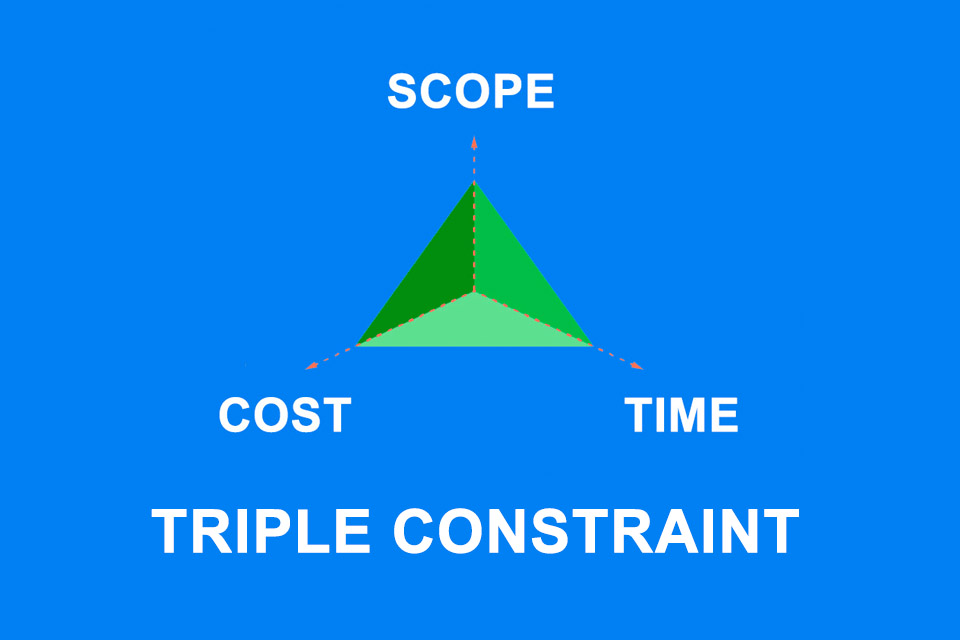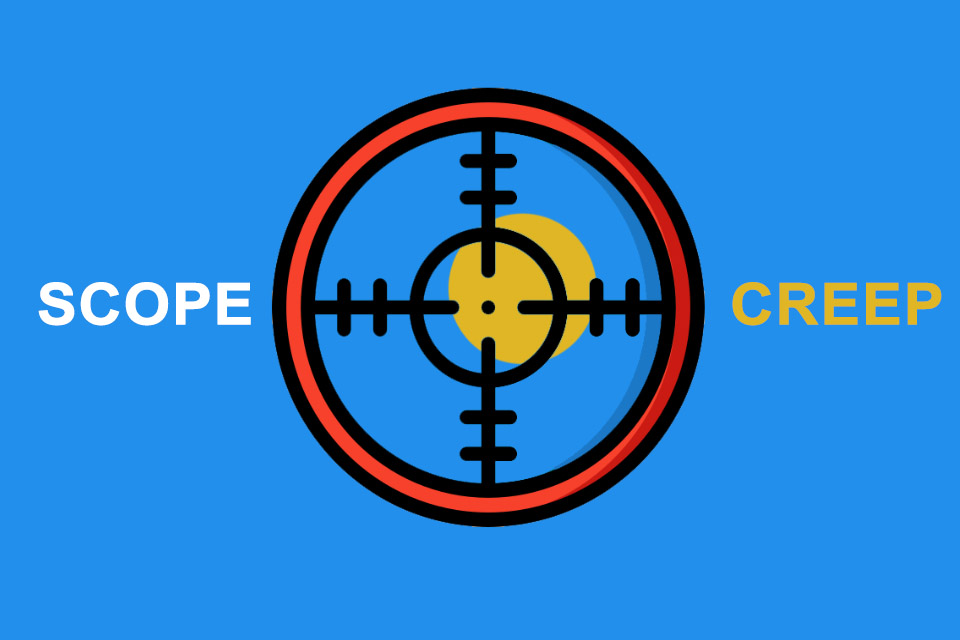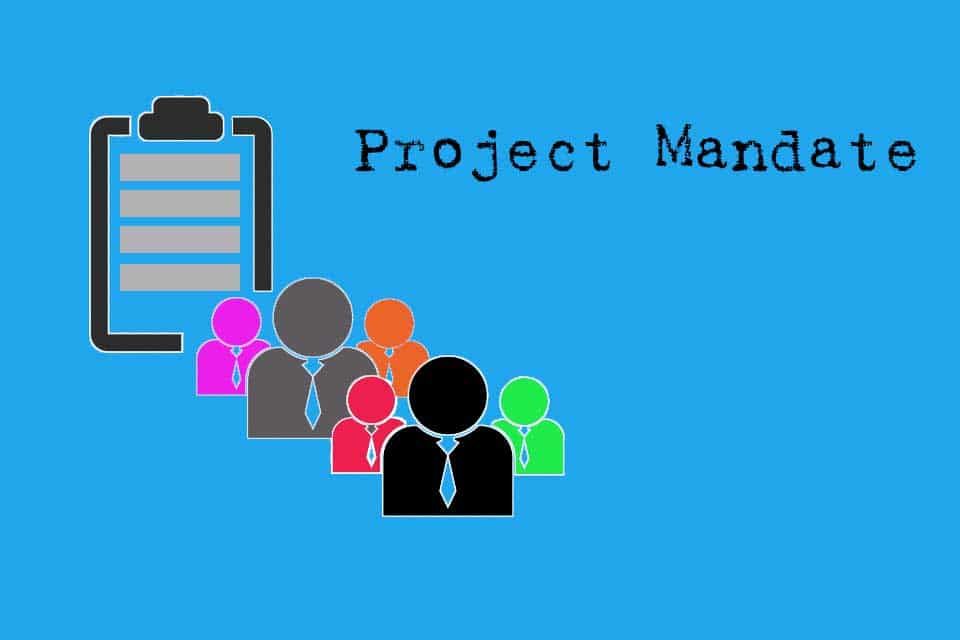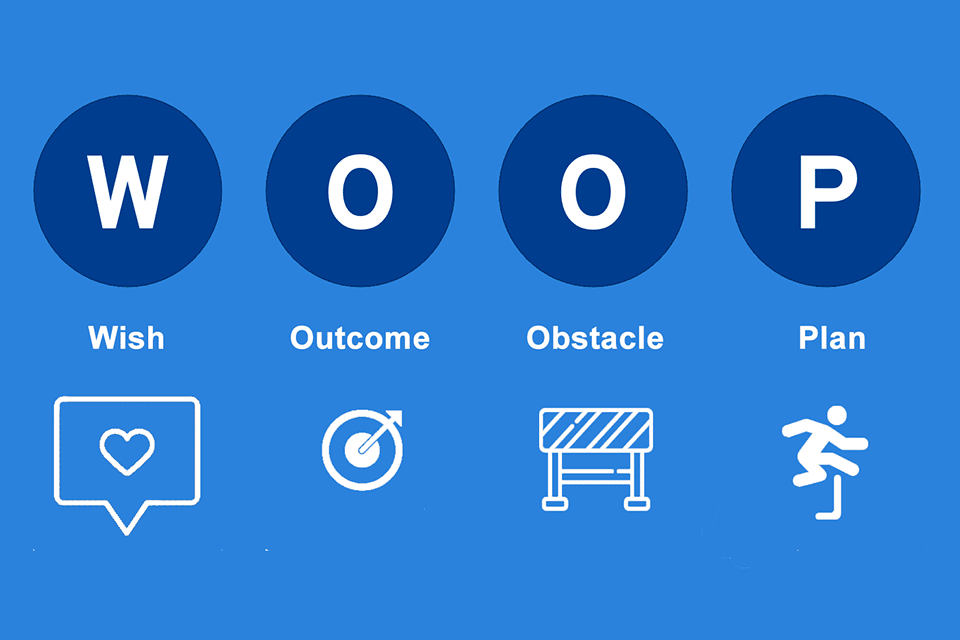What is Triple Constraint?
Smartpedia: The Triple Constraint explains the interplay and interaction of the three key factors scope, cost and time in project management.
Triple Constraint – the interplay of scope, cost and time in projects
Project management is often about three key elements or dimensions¹:
- Scope,
- costs and
- time.
Since the interaction of the dimensions makes it difficult to establish and maintain a balance, the term Triple Constraint – sometimes also named Project Triangle or Magic Triangle – has become established.²
Scope describes the content of a project. It is determined by the goals and wishes of the stakeholders, from which concrete tasks and the end product or result of the project are derived. From the scope of the project, costs for employees, materials and machines can be planned and budgets can be set. Time refers to the duration and fixed deadlines for the completion of individual tasks and the completion of the project.
In classic project management³, the Triple Constraint refers to the idea that you can only choose two of the three dimensions and that any change to one element will affect the other two. For example, a project manager may have to cut back on scope to meet a tight deadline or expand the scope of the project to ensure it meets defined quality standards. The key is to find the right balance that works for each individual project and its stakeholders, while keeping the project on track and aiming for a successful outcome.
Challenges and tips for balancing the Triple Constraint
Balancing the Triple Constraint is a challenge. In practice, there are numerous situations that can make it even more difficult. Some of these challenges are:
- New requirements may arise during the course of the project that take time and cost to realise. Project managers should be prepared to make changes to the defined scope of work as needed, to discuss feasibility with developers and to consider and make decisions about the implications.
- Project managers should work within available resources, including time, staff and budget. It can be difficult to balance the Triple Constraint when resources are limited and unexpected obstacles arise, for example in the form of technical dependencies that could not have been foreseen. Staff illnesses or changing priorities in the company, which are at the expense of the staff, can also easily jeopardise agreed deadlines.
- In addition, stakeholders may have different expectations regarding scope, costs and time, which makes it difficult in individual cases to find a sensible balance that meets the needs of the parties involved. Project managers should therefore be able to communicate with stakeholders and find ways to find and agree on meaningful compromises.
Despite these challenges, there are some tips that can help project managers balance the Triple Constraint:
- Clearly defining project goals and objectives helps to ensure that all stakeholders are working towards the same end goal and have a sense of direction at all times.
- Continuous communication with stakeholders can help ensure that everyone is informed and on the same page, and can also help address concerns or changing expectations as they arise.
- Prioritising and dividing tasks into smaller, more manageable parts can help keep the project on track and ensure that the most important tasks are completed first.
- Regularly monitoring progress can help recognise potential problems or delays before they become major issues and keep the project on track and moving forward. This is where the use of project management software can be useful.
Basically, balancing the Triple Constraint requires a certain degree of flexibility, as requirements may change or unexpected obstacles may arise. Project managers must be prepared to adapt and make changes as needed to keep the project on track.
Advantages and disadvantages of the Triple Constraint
The idea of the Triple Constraint emphasises individual aspects in project management that could be declared as advantages:
- It helps project managers prioritise goals and focus on what is most important for the success of the project. By considering the interplay of scope, cost and time, they can make informed decisions about the allocation of resources and the distribution of tasks.
- The Triple Constraint provides a framework for project management decision-making. By considering trade-offs between key factors, project managers can make informed decisions about how to proceed with a project and make appropriate changes as needed.
- Understanding trade-offs helps stakeholders recognise that while they can formulate new requirements, they will always affect cost and time. Without appropriate compensation – i.e. reducing the scope of work by an identical amount elsewhere – each new requirement means additional effort and delivery at a later point.
- Communication between project managers, stakeholders and team members is facilitated because project goals and trade-offs are clearly articulated so that everyone involved understands the project’s priorities and objectives.
Criticisms or disadvantages with the Triple Constraint are as follows:
- The Triple Constraint assumes that you can only change two of the three elements. In business reality, however, “magic” in the form of creative solutions is often required to achieve all three goals simultaneously. In software development, for example, a new requirement can point the way to another implementation idea that proves to be faster and more cost-effective in the long run.
- The triangle simplifies reality and does not take into account additional factors such as risks, resource constraints, delayed decisions by stakeholders, etc. It also simplifies complex issues.
- It also oversimplifies complex issues. The interplay between scope, costs and time can be very complex, so that subtleties of these relationships cannot be fully captured. In addition, individual dimensions can also become arbitrarily complex. Technical debts, for example, can have a significant influence on the performance and quality of a component in the course of software development, without the opportunity to take this into account in the planning in advance.
And last but not least, it should be noted that although the Triple Constraint is a model of thought that describes the relationship between the key factors mentioned, it is not suitable as an instrument for planning or controlling a project in everyday project life. Nor does it help to eliminate conflicting objectives.
Impulse to discuss
The Triple Constraint states that cost is a function of time and scope and that these three factors interact in a defined and predictable way. How is it then that many projects that are over budget are also behind schedule? Why is it that projects that are both late and over budget tend to under-deliver? So does the Triple Constraint sound good in theory, but in practice it is useless?
Notes:
1] Opinions vary as to whether additional dimensions such as risk or, more recently, sustainability should be taken into account. For some, such elements are already implicitly taken into account; those who demand more sustainability, for example, “only” need to formulate the scope accordingly, while those who want to deal better with risks should “simply” plan more time for risk management. Alternative views argue that the additional elements need a separate correspondence, on the one hand to do justice to their importance, and on the other hand to show that the success of a project is more than just a balance between scope, cost and time.
[2] Interestingly, opinions also vary as to what is magical about the triangle: the change in one dimension that “magically” alters the other two dimensions, or the challenge of keeping the three aspects in balance with each other, which is difficult to do and, if done, seems like magic.
[3] In classical project management, the Triple Constraint consists of the dimensions of scope, cost and time. The idea is that these three factors are interconnected and that changes to one factor affect the others. In agile project management, the triangle concept is still relevant, but the dimensions are, for example, value, quality and constraints. Value refers to the benefits that the project brings to the stakeholders, quality refers to the degree of stakeholder satisfaction with the project outcomes, and constraints refer to the factors that limit the project team’s ability to deliver value and quality. In both traditional and agile project management, the triangle is designed to help project managers understand the trade-offs that must be made to deliver a successful project.
There is also a magic quadrilateral, although this does not address the management of projects, but rather, as an economic concept, the overall economic equilibrium. On 8 June 1967, the “Law for the Promotion of Stability and Growth of the Economy” was enacted in the Federal Republic of Germany, which defines four “magic” points as steady and appropriate economic growth, a stable price level, a high level of employment and external balance. An extension of this is the magic hexagon.
Here you can find a nice German language video Magisches Dreieck im Projekt einfach erklaert.
If you like the article or would like to discuss it, please feel free to share it in your network. And if you have any comments, please do not hesitate to send us a message.
Here you will find additional information from our Smartpedia section:



